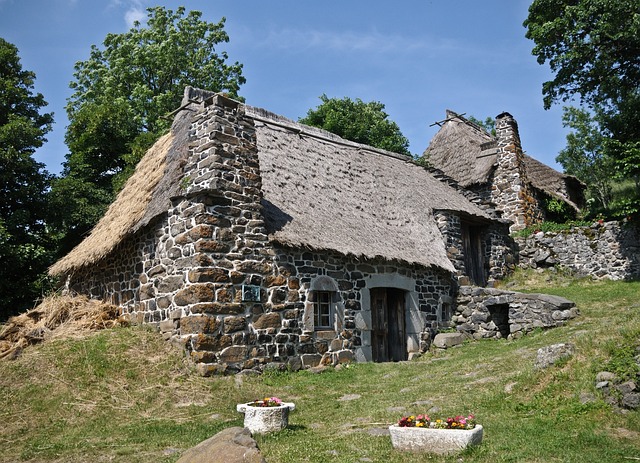Prefab roofing for homes offers a modern, efficient solution with versatility in design and installation. These off-site manufactured panels reduce construction time, cater to diverse architectural styles (flat, pitched, or modular), promote sustainable building practices, and enhance energy efficiency. Flat roofs provide cost-effective simplicity, while pitched roofs offer classic aesthetics and superior protection against weather. Modular systems allow for customizable designs, unique pitch angles, and innovative features, aligning with both aesthetic visions and functional requirements. Choosing the ideal prefab roofing style depends on climate, personal preference, and structural needs, ensuring a home's visual appeal and long-term practicality.
“Discover the ultimate versatility in modern home design with prefabs roofing solutions. From flat, pitched to modular roof styles, this article explores how contemporary construction techniques cater to diverse architectural preferences.
Learn about the benefits of each style—from the sleek simplicity of flat roofs to the timeless elegance of pitched designs, and the unparalleled customization offered by modular systems.
‘Understanding Prefab Roofing’ unlocks a world where your dream home’s roof becomes an integral part of its overall aesthetic and functionality.”
Understanding Prefab Roofing: A Versatile Solution for Modern Homes
Prefab roofing, or prefabricated roofing systems, is a modern solution that offers immense versatility and efficiency in home construction or renovation. This innovative approach involves manufacturing roof components off-site in a controlled environment, ensuring precise measurements and high-quality craftsmanship. Once produced, these prefab roof panels or sections are easily transported and assembled on-site, significantly reducing installation time compared to traditional roofing methods.
The appeal of prefab roofing for homes lies in its adaptability. Whether it’s a flat, pitched, or modular design, prefab roofing systems can accommodate various architectural styles. For instance, they seamlessly integrate with contemporary designs that demand sleek, low-sloped roofs, while also enhancing the aesthetic appeal of traditional homes with steeper slopes. This versatility not only caters to diverse homeowner preferences but also promotes sustainable building practices by minimizing on-site waste and streamlining construction processes.
The Benefits of Flat Roofs: Simplicity Meets Practicality
Flat roofs have long been a popular choice for many architectural styles, and with good reason. One of the primary benefits of opting for a flat roof design is its simplicity. Prefab roofing for homes offers a straightforward, cost-effective solution that can be easily installed and maintained. This versatility makes it an attractive option for modern homeowners seeking both aesthetic appeal and practicality.
Beyond ease of installation, flat roofs provide valuable space for additional functions. They can be transformed into cozy outdoor living areas, complete with seating and dining zones, offering a unique opportunity to blend indoor and outdoor spaces seamlessly. Moreover, their low pitch or absence of pitch makes them highly energy-efficient, as there’s less surface area for heat transfer, resulting in reduced cooling costs during warmer months.
Pitched Roofs: Classic Elegance and Structural Integrity
Pitched roofs, with their angled lines and distinct slopes, exude classic elegance that has been a timeless favorite in architecture. Beyond aesthetic appeal, pitched roofs offer structural integrity and superior protection against harsh weather conditions, making them a popular choice for prefab roofing for homes. The design allows for effective water runoff, preventing clogging and potential damage to the roof’s underlayment and the building below.
This style’s versatility is evident in its ability to accommodate various pitches, from gentle slopes to steep angles, catering to different architectural styles and regional climate requirements. The robust construction techniques employed in prefab roofing ensure that pitched roofs can withstand strong winds, heavy snowfall, and other extreme weather events, providing peace of mind for homeowners.
Modular Roof Systems: Customization at Its Finest
Modular roof systems represent a cutting-edge solution in residential construction, offering unparalleled customization and versatility. Prefab roofing for homes built with modules allows architects and homeowners to design unique structures that perfectly fit their aesthetic vision and functional needs. Each modular section is manufactured off-site, ensuring precision and quality control, before being transported and assembled on-site. This approach streamlines the building process, reduces construction waste, and often results in significantly lower costs compared to traditional roofing methods.
The beauty of these systems lies in their adaptability. Whether it’s a modern, minimalist design or a complex architectural masterpiece, modular roofs can be tailored to fit any style. Homeowners can choose from various materials, colors, and finishes, creating a roof that not only enhances the overall look of their home but also provides superior insulation, durability, and energy efficiency. This customization extends to structural aspects, allowing for unique pitch angles, integrated solar panels, or even creative shapes that break the mold of conventional roofing.
Designing with Flexibility: Choosing the Right Roof Style for Your Prefab Home
When designing a prefab home, selecting the appropriate roof style is a key consideration that significantly impacts both aesthetics and functionality. Each roof type—flat, pitched, or modular—offers distinct advantages tailored to different architectural preferences and structural needs. For instance, flat roofs provide a sleek, modern look, simplifying construction and maintenance while minimizing slope requirements for drainage. On the other hand, pitched roofs are traditional favorites, enhancing curb appeal with their angled lines, offering better insulation, and facilitating easier water runoff.
Modular roofing systems introduce versatility by allowing custom configurations to suit unique designs. These innovative solutions can seamlessly integrate into complex architectural elements, catering to contemporary aesthetics. Moreover, modularity enables efficient installation and potential future reconfiguration, making it an ideal choice for adaptable living spaces. Ultimately, the right prefab roofing style for your home depends on factors like climate, personal taste, and structural considerations, ensuring both visual appeal and long-term practicality.
Prefab roofing offers a versatile solution for modern homes, catering to diverse architectural styles and functional needs. By choosing between flat, pitched, or modular roof designs, homeowners can enhance their living spaces with a structural element that combines simplicity, practicality, and aesthetic appeal. Whether embracing classic elegance or opting for customization, prefab roofing ensures durability and streamlines the construction process, making it an attractive option for those seeking efficient and visually pleasing solutions in the realm of prefab homes.
